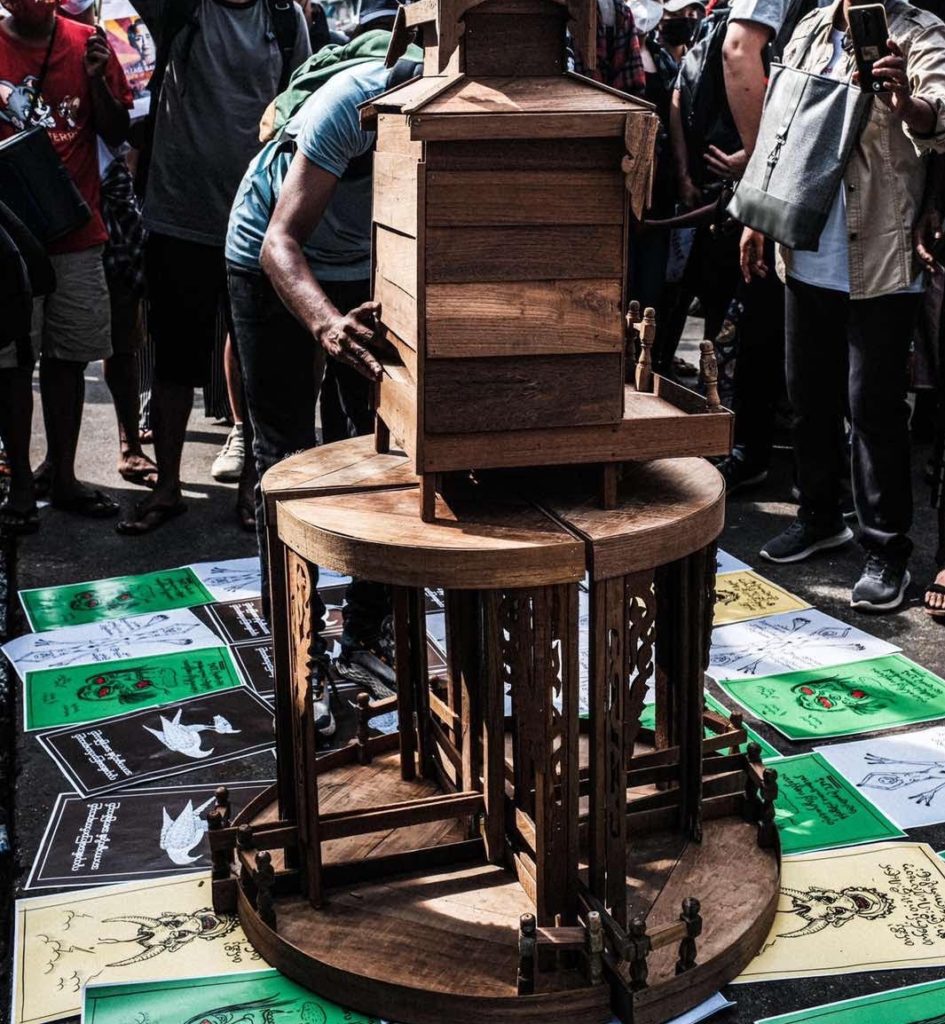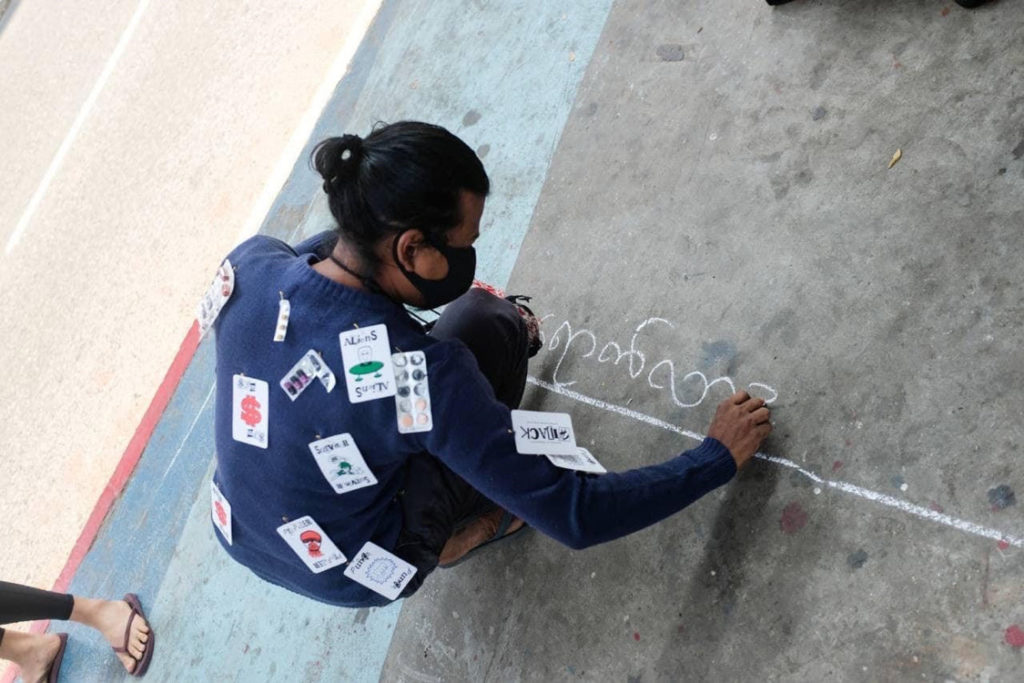Notes on Myanmar’s Poets
by Greg Bem | Contributing Writer
It has been roughly a month since the deaths of two Monywa, Myanmar poets, K Za Win and Myint Myint Zin. Their deaths, acts of murder at the hands of the junta regime that seized power in February, are paired with countless stories of violence toward Myanmar’s activists and organizers. Poets, who have often been in the center of continual protest in the name of democracy, have been highly visible in recent weeks. PEN International has maintained continual coverage of the arrests and deaths, and the PEN Myanmar Center released a statement calling for the release of detained poets.
It does not take much Googling to see the extraordinary numbers of protesters who have been detained and killed during the protests of the coup, and as social media posts on Facebook and Twitter have revealed over past weeks, the regime’s brutal tactics have led to significant responses from local poets and artists throughout the vast country despite fear for safety and security.
As with many poets in Myanmar, K Za Win was a strong advocate for educational reform in a country with a history of indoctrination and hegemonic social control. You can read his widely-circulated poem to get a sense of his passion and lifelong commitment to change. You can also search his name on Facebook and Twitter and encounter many stories from friends and peers over the year—his network was vast, and filled with life. I met K Za Win in 2019 when I visited Myanmar. Alongside half a dozen other Monywa poets, we ate soup, drank whiskey, and read poems. We talked about the enclave of poetry in Monywa, a small, charming crossroads in the center of the country. In 2019, there was cynicism from poets who had been incarcerated and oppressed by their national and local governments. But there was also a sense of hope, a sense that the fight was possible. We continue to see this hope as we see K Za Win’s life is far from forgotten, with countless poets and other activists emerging in memorial and tribute, emerging to continue to fight.
A recent, powerful montage published on YouTube on March 15th illustrates the grassroots efforts of these poet activists, and posits their voices and beliefs amidst dozens of streets and alcoves. “[We] are glad to show through this video where the poets stand in this fight against the dictatorship and how seamlessly they are one organism with the peoples of Myanmar” reads the description of the video, which was published by Fish Tank Poetry and includes numerous poets from the Myanmar Poets’ Union.
Even more recently, on March 18th, a video emerged on YouTube further highlighting the activities of the voices on the ground. “Let’s Go Beat Some Pots and Pans” shows the world an example of the many acts of performative poetics occurring throughout Myanmar alongside the poets’ reading of poems. From the description: “In Myanmar, if you want to drive away evil from your home, you bang pots and pans. And since the military coup on February 1st, people across the nation have been pounding their pots and pans at 8 o’clock every night. A show of solidarity. A civil outcry against injustice. A defiant act of resistance.”
As with two years ago when much of the world was made aware of the Rohingya crisis, at times the flood of information emerging from the country regarding its poets and collective poetry is relentless, and keeping on top of the latest acts of artistic resistance feels impossible. I reached out to friend and collaborator Maung Day to get a better sense of the landscape of poetry, public and private, occurring during Myanmar’s latest chapter of violence. Maung Day has been deeply engaged with the poetry community in Myanmar for years, and discusses the role of poetry in Myanmar’s culture in an interview I conducted with him in person from the arid temple city of Bagan during my 2019 visit.
Maung Day provided me with images, which are included here with permission. The images reflect a multidisciplinary approach to sharing messaging of resistance. Below you will see installations, posters, rituals, and readings, all of which highlight the robust actions of Myanmar’s poets, from Yangon to Monywa to Mandalay, and the many other villages, towns, and cities across the country whose people are fighting for freedom and liberation.
Maung Day’s prophecy reads: “Termites are coming! They will come and eat into books, bridges, houses, gardens, children’s cribs, soil . . .” Maung Day also drew posters with the texts of prophecies that were written by his friends by parodying or mimicking old prophecies.
***
Maung Day also drew posters with the texts of prophecies that were written by his friends by parodying or mimicking old prophecies.
Frogs vanish without a trace
No sun up there means it’s about to get dark
And your town too far away”
A crack in the fried dough
A son that will destroy your country”
Fry the door in the same fat
The Bovine Man you saw
Hiding from the guillotine”
But the waiting sword is good enough”
Of the above image, Maung Day writes, “I made this poster on 15th March 2021 after so many people were shot by the police and soldiers in Hlaing Thar Yar. Everybody was going, ‘We’ve had enough. It’s time to pick up our swords for our own defense.'”
Of this last piece, Maung Day writes, “I made this because I am convinced we will get the dictator and his minions by their necks, but I am also aware that the system, the structure, and attempts to restore the same status quo may remain. So we need to get the man and root out the system simultaneously.”
***
In mid-February, poets, rappers, and students gathered at Hledan Junction mid-February, surrounded by crowds of protestors. They read poems and rapped. Maung Day built the Shrine of Fear in the middle of the gathering crowd. Inside the shrine sits a man of some authority, shaped like a strange creature with scales on his body. A child, the Heir, sits in his lap. People disposed of things they didn’t want with them at the shrine, photos of Min Aung Hlaing, the leader of the coup, and spit.

***
Many of the poets are, right now, acting on-the-fly, and considerations of safety are paramount with fears of email hijacking and other tech-hacking running rampant. I’m grateful for Maung Day for providing the images above. More so, I’m thankful that Maung Day was interested in contributing to this piece, but his exponential energy is nothing new.
Myanmar’s poets continue to move, continue to act, continue to fight. For most of them, poetry and politics are inseparable—poetry is fueled by the goals of social change. If you’re interested in learning more, I recommend looking up interviews with prominent Myanmar poet ko ko thett, whose Bones Will Crow anthology is critically acclaimed and widely available. While slightly dated, it still reflects the ongoing commitments of the poets within the country. ko ko thett’s interviews are also deeply enlightening and checking out what’s available to read on Jacket and, recently, Tupelo, adds continued depth and personal details to the landscape of information. For the latest information on the protests more broadly, follow journalists like Poppy McPherson and Wa Lone.
—
Greg Bem is a Seattle-based librarian and poet, whose recent books include Of Spray and Mist (Hand to Mouth, 2020) and Green Axes (Alien Buddha, 2021).


